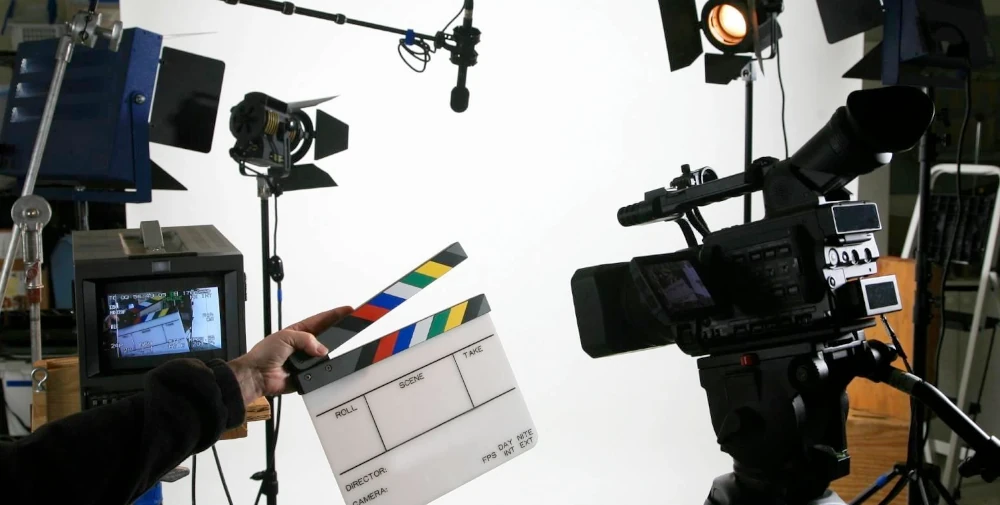
The Leading Role Software Plays in Green Film Production
The film business is undergoing a significant change in its approach to environmental responsibility, as much as in narrative or visual effects. From specialty to imperative, green filmmaking—also called sustainable film production—has evolved. Driving this change from the core is
What is Software?
Software technologies are enabling filmmakers to lower their carbon footprint, simplify processes, and adopt environmentally friendly practices from pre-production planning through post-production editing. Let’s investigate how software is transforming the film business towards more sustainability.
Reducing Paper and Waste: Digital Pre-Production
Pre-production historically consisted in mountains of documentation—scripts, storyboards, call sheets, schedules, and more. Important tools such as media production software streamline call sheets, production calendars, and shot lists. As digital technologies have become more common, all of these procedures may now be managed electronically, therefore reducing waste and increasing efficiency.
Important Programming Tools:
RFM: For call sheets, production calendars, and shot lists.
Final Draft: For digital scriptwriting and teamwork.
Storyboarder: For digital storyboards’ drawing, sharing, and editing.
Teams greatly reduce paper use and printing by digitising pre-production, therefore improving the process not only in terms of environmental impact but also in speed and cooperation.
2. Virtual production and distant collaboration
Reducing travel needs is one of the most important ways software is aiding green filmmaking. Virtual production tools and parallel film productions enable teams to collaborate effectively across continents without the environmental impact of travel. Teams may work across continents without the environmental impact of plane travel using tools such as Zoom, Frame.io, and cloud-based editing systems.More remarkably still, virtual production—using real-time game engines like Unreal Engine—allows filmmakers to construct vast, photorealistic settings without ever leaving a sound stage.
One advantage is lower carbon emissions connected to travel.
- Reduces the necessity for on-location filming.
- Reduces the waste from actual sets and props.
Studios lessen the environmental load by substituting artificial backdrops for physical ones and virtually mimicking real-world surroundings while preserving creative liberty.
3. Tracking carbon footprints and planning sustainability
These days, software systems exist especially to monitor and control the environmental effects of movie production. These technologies provide practical information to lower emissions by helping teams track energy use, trash, transportation, and more.
Examples include:
Albert, via BAFTA: a film and TV production carbon calculator.
Green Spark Group: Offering sustainable software and consulting services.
AdGreen is a toolkit for monitoring carbon use in video creation and advertising.
Filmers can actively minimize their impact by including sustainability planning in the center of production management instead of retroactively offsetting it.
4. Wise resource Management and Scheduling
Production scheduling is complicated. Hence, ineffective planning can result in unneeded travel, overtime, and energy consumption. Software designed to maximize scheduling, like film management software, helps reduce energy consumption and logistical inefficiencies. Software designed to maximize scheduling can greatly reduce environmental impact.
Current Software Use:
- CineSchedule: facilitates the best use of shooting plans.
- Synchronize: Cloud-based production planning meant to lower logistical inefficiencies.
Effective scheduling reduces fuel usage, fewer days on set, and reduced transportation requirements. It benefits the earth as well as the budget.
5. Post-production tools and digital asset management
Additionally undergoing a green revolution is post-production. Editors and VFX teams are shifting to cloud-based systems rather than depending on long rendering periods and energy-intensive hard storage.
Innovations: DaVinci Resolve / Adobe Premiere Pro (Cloud-Based Workflows) allows group editing without physically changing discs.
Avid Media Central helps remote editorial teams with limited infrastructure.
Furthermore, employing tools like Iconik or Frame.io helps to manage digital assets, so lowering the demand for running big server rooms or transporting hard drives both of which have significant energy expenses.
Department of Virtual Set Design and Sustainable Art
Among the main causes of material waste in conventional filmmaking is set building. Now, without cutting a single plank of wood, software-driven previsualization tools (such as SketchUp or AutoDesk Maya) enable designers to prototype and iterate.
Once the scene is digitally perfected, production teams can create just what is required—or use LED volume stages over real-world locations.
7. Optimizing AI and Machine Learning
Filming logistics decisions are being assisted with artificial intelligence more and more. AI can: – Foretell the most effective filming times.
Plan lights so as to lower power use.
Help with casting and location choices meant to minimize travel.
Companies like Cinelytic and Scenechronize are maximizing efficiency and environmental effects by adding artificial intelligence to movie schedules.
In conclusion
Thanks to the ability of the software, green film production is no longer only a utopian dream; it is a realistic possibility. Software is silently but powerfully supporting the industry’s sustainable future by digitizing processes, enabling virtual collaboration, and optimizing every level of production.
With software lighting guiding the way, the film sector is demonstrating that sustainability and creativity can coexist as the need grows for all businesses to lower their carbon footprint.
FAQs
1. Describe green film manufacturing.
Green film production is environmentally conscious filmmaking methods meant to lower carbon emissions, cut waste, and save resources all through the production life—from planning to post-production.
2. How may software help to lessen the environmental effects of filmmaking?
By digitising papers, allowing remote collaboration, streamlining manufacturing logistics, measuring carbon emissions, and assisting virtual set design—all of which serve to create a more sustainable workflow—software aids to lower environmental impact.
3. Are green software tools available to tiny or indie filmmakers?
Indeed. Many sustainable production tools are either free or somewhat reasonably priced. For indie producers, for instance, basic project management apps like Trello or Notion, virtual conference tools like Zoom, and scriptwriting apps like Celtx can assist in lowering environmental effects.
4. Do virtual productions have better sustainability than conventional ones?
Indeed, virtual shows typically leave less of a carbon footprint. They cut the demand for set construction, location shots, and physical travel, therefore lowering emissions and material waste.

